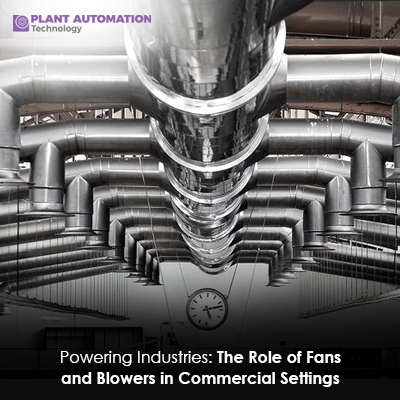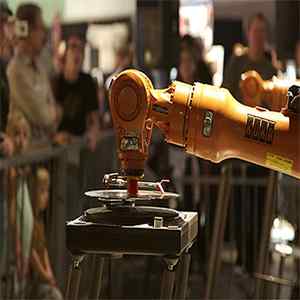Powering Industries: The Role of Fans and Blowers in Commercial Settings

In the vast landscape of industrial and commercial operations, fans and blowers play a pivotal role that often goes unnoticed but is indispensable for the smooth functioning of various processes. From maintaining optimal environmental conditions to facilitating crucial operations in diverse sectors, fans and blowers are the unsung heroes that power industries across the globe. This article delves into the intricacies of these essential components, exploring their functions, applications, advancements, and the critical role they play in driving efficiency and productivity in commercial settings.
I. Understanding Fans and Blowers
Before delving into their specific applications, let's understand what fans and blowers are and how they differ. Both fans and blowers are mechanical devices designed to move air or gases, but they vary in terms of pressure, flow rate, and application.
Fans: Fans are designed to move large volumes of air at relatively low pressure. They are commonly used for ventilation, cooling, and air circulation in commercial and industrial buildings, HVAC systems, electronic equipment cooling, and more. Fans come in various types, including axial fans, centrifugal fans, and mixed-flow fans, each suited for different applications based on their airflow requirements and pressure capabilities.
Blowers: Blowers, on the other hand, are capable of generating higher pressures compared to fans. They are used in applications where a significant amount of air or gas needs to be moved at higher velocities or pressures, such as pneumatic conveying systems, combustion air supply, industrial drying processes, wastewater treatment plants, and more. Blowers are often categorized into centrifugal blowers and positive displacement blowers, with each type offering specific advantages depending on the application.
II. Applications in Commercial Settings
The versatility of fans and blowers makes them indispensable across various industries and commercial sectors. Here are some key applications where fans and blowers play a crucial role:
HVAC Systems: Heating, Ventilation, and Air Conditioning (HVAC) systems rely heavily on fans and blowers to maintain comfortable indoor environments in commercial buildings, offices, hospitals, shopping malls, and residential complexes. Fans circulate air while blowers ensure adequate airflow and pressure for efficient heating and cooling processes.
Industrial Ventilation: Proper ventilation is critical in industrial settings to control air quality, remove contaminants, and maintain safe working conditions. Fans and blowers are used in ventilation systems for factories, warehouses, laboratories, and manufacturing facilities to ensure proper airflow and exhaust of harmful gases, dust, and fumes.
Air Pollution Control: Fans and blowers play a vital role in air pollution control systems, including dust collectors, scrubbers, and electrostatic precipitators. These systems use fans to create airflow that carries pollutants into filtration or scrubbing units where contaminants are removed before releasing clean air into the environment.
Process Cooling and Drying: In industries such as food processing, pharmaceuticals, and chemical manufacturing, fans and blowers are used for process cooling and drying applications. They help regulate temperatures during production processes, facilitate the drying of products or materials, and ensure consistent quality and efficiency.
Material Handling: Blowers are extensively used in pneumatic conveying systems for bulk material handling in industries like agriculture, mining, construction, and logistics. They transport materials such as grains, powders, cement, and chemicals through pipelines using air or gas flow, reducing manual handling and improving productivity.
Combustion Air Supply: Industries that rely on combustion processes, such as boilers, furnaces, and incinerators, require blowers to provide the necessary supply of air for efficient combustion. Proper combustion air supply ensures optimal energy efficiency and reduces emissions.
Wastewater Treatment: In wastewater treatment plants, blowers are used in aeration systems to supply oxygen to biological treatment processes, such as activated sludge systems. These blowers promote microbial activity for effective wastewater treatment and odor control.
Electronic Cooling: Fans are essential components in electronic devices and equipment for thermal management. They help dissipate heat generated by electronic components, preventing overheating and ensuring reliable operation of electronic systems.
III. Advancements and Innovations
The field of fans and blowers has witnessed significant advancements and innovations driven by technological progress, environmental considerations, and the need for energy efficiency. Some notable developments include:
Energy-Efficient Designs: Manufacturers are focusing on developing energy-efficient fans and blowers by optimizing blade designs, motor technologies, and control systems. Variable frequency drives (VFDs) are increasingly used to regulate fan and blower speeds based on demand, reducing energy consumption and operating costs.
Smart Controls and Automation: Integration of smart controls, sensors, and automation technologies allows for precise monitoring and control of fan and blower operations. This enables predictive maintenance, remote monitoring, and optimization of performance parameters for enhanced efficiency and reliability.
High-Efficiency Motors: The adoption of high-efficiency motors, such as EC (electronically commutated) motors and permanent magnet motors, contributes to energy savings and reduced environmental impact. These motors offer improved efficiency, lower noise levels, and better control compared to traditional motor technologies.
Noise Reduction: Noise pollution is a concern in many industrial and commercial environments. Manufacturers are investing in noise reduction technologies and acoustic design strategies to produce quieter fans and blowers without compromising performance.
Material and Coating Innovations: Advancements in materials and coatings enhance the durability, corrosion resistance, and performance of fan and blower components, especially in harsh operating conditions or corrosive environments.
CFD Simulation and Design Optimization: Computational Fluid Dynamics (CFD) simulation tools are utilized for virtual testing and optimization of fan and blower designs. This allows engineers to fine-tune aerodynamic characteristics, minimize pressure losses, and improve overall efficiency before physical prototyping.
IV. Challenges and Future Trends
Despite the progress in fan and blower technology, several challenges and emerging trends shape the future of these systems in commercial settings:
Energy Efficiency Regulations: Stringent energy efficiency regulations and sustainability goals drive the demand for high-efficiency fans and blowers. Manufacturers must continue to innovate and comply with evolving standards to meet market demands and environmental requirements.
Digitalization and Industry 4.0: The integration of digitalization, IoT (Internet of Things), and Industry 4.0 principles into fan and blower systems enables data-driven insights, predictive maintenance, and optimization algorithms. This digital transformation enhances performance, reliability, and operational intelligence.
Green Technologies: The shift towards green technologies and renewable energy sources influences the development of eco-friendly fans and blowers. This includes the use of bio-based materials, energy recovery systems, and sustainable manufacturing practices to minimize environmental impact.
Customization and Application-Specific Solutions: Industries increasingly seek customized fan and blower solutions tailored to specific applications and operational requirements. Manufacturers need to offer flexible designs, modular configurations, and rapid prototyping capabilities to meet diverse customer needs.
Global Supply Chain Dynamics: The global supply chain landscape, including raw material availability, logistics, and geopolitical factors, impacts the manufacturing and delivery of fan and blower components. Supply chain resilience and strategic partnerships become essential for ensuring uninterrupted operations and supply continuity.
Emissions Reduction and Air Quality: Addressing emissions reduction targets and improving indoor air quality drive innovation in pollution control technologies and efficient air handling systems. Fan and blower solutions play a vital role in enhancing air quality standards and minimizing environmental impacts.
In conclusion, fans and blowers are indispensable components that power industries and commercial operations across various sectors. Their diverse applications, technological advancements, and evolving trends reflect their crucial role in ensuring efficiency, sustainability, and safety in modern industrial and commercial settings. As industries continue to evolve and prioritize environmental stewardship, the future of fans and blowers lies in innovative solutions that balance performance, energy efficiency, and environmental responsibility.







